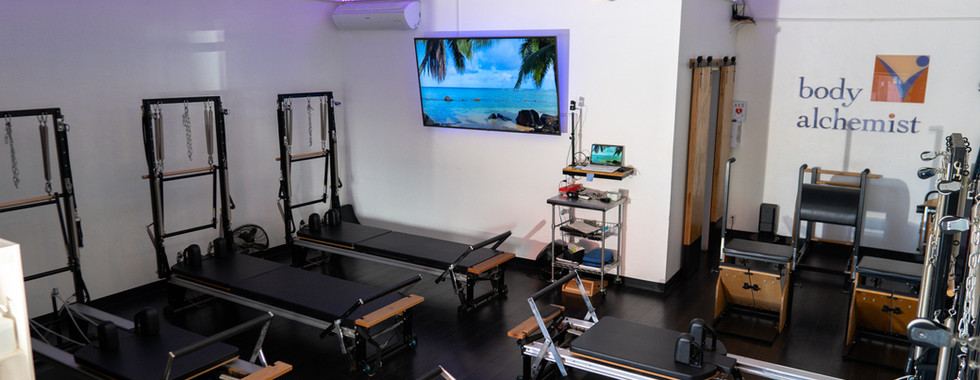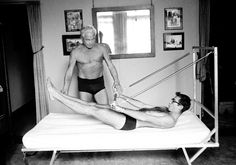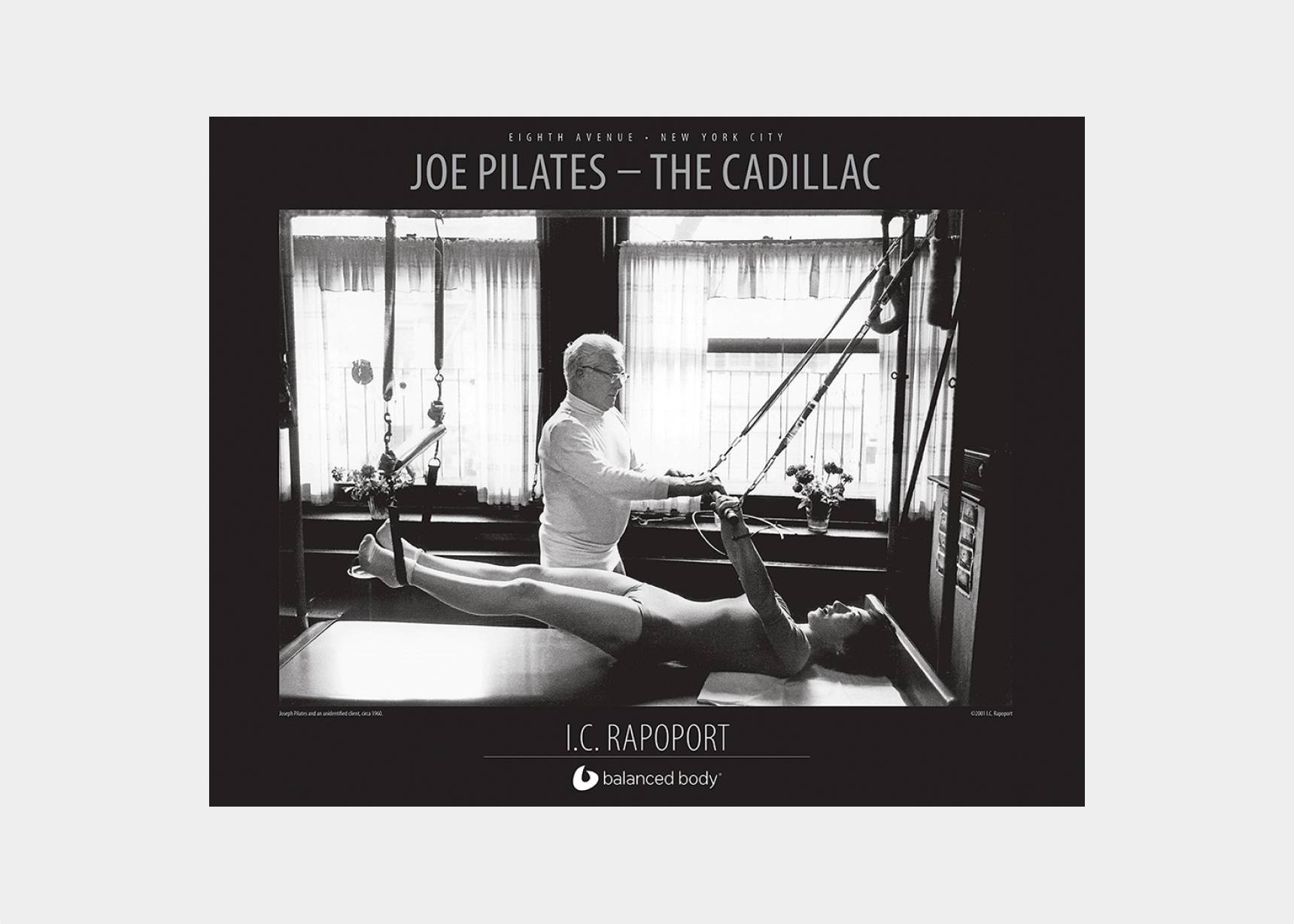WWI, Prison Camp, and Pilates Apparatuses.
- Kin P.

- Aug 26
- 3 min read
Updated: Sep 3
You’ve probably seen Pilates studios popping up everywhere—machines lined up, reformers sliding back and forth, Instagram clips showing elegant moves. It looks modern, sometimes even fancy. But would you believe me if I told you this method started in a prison camp during World War I? And while today many associate Pilates with women’s fitness, its creator, Joseph Pilates, first used it to train soldiers and help injured men recover their strength. Surprised? Let’s dig into the story.
Origins in Struggle
Pilates began in one of the unlikeliest of places: a World War I prison camp. Joseph Pilates, a German performer and boxer, was interned in England as an “enemy alien” and confined at Knockaloe camp on the Isle of Man. Instead of succumbing to despair, he transformed his confinement into an experimental gym. Using springs from hospital beds, he improvised equipment to help injured soldiers rebuild strength and mobility. Here, his philosophy took shape: mind and body could be trained to recover and thrive, even in the harshest conditions¹.

Beyond the Prison Walls
After the war, Joseph refined his method in Germany. In the 1920s, he emigrated to New York with Clara and opened a studio that quickly attracted dancers, athletes, and everyday people. What set his method apart was its blend of precision, breath, control, and flow—a stark contrast to the brute-force training popular at the time. Dancers, in particular, valued Pilates for preventing injuries and enhancing performance, and word-of-mouth from the arts and athletic communities expanded its reach².

From Niche to Mainstream
For decades, Pilates remained a niche practice among performers and rehab patients. But from the 1980s onward, it exploded into popular culture. Hollywood actors, professional athletes, and fitness enthusiasts flaunted its benefits—leaner muscles, improved posture, and durable joints. Today, Pilates is practiced globally—in boutique studios, gyms, physical therapy clinics, and even living rooms via online platforms. The journey from improvisation in a prison camp to widespread, mainstream fitness trend is one of the most unexpected success stories in exercise history³.
Contrology as a Living System
Joseph Pilates called his method “Contrology,” coining it as the art of mindful movement that coordinates body, mind, and spirit². While the heart of his approach remains powerful today, it isn’t static. As a pioneer working without modern research tools, Joseph laid the foundation—but what unfolded afterward was shaped by both science and creativity.
Pilates is an open system—not constrained to a rigid blueprint. Its strength lies not only in tradition but in the ability to evolve. When enhanced with evidence-based research, functional training, and movement science, Pilates becomes even more efficient, effective, and customizable—perfect for general wellness or for specific individual goals⁴⁵.
The Benefits That Keep It Going
It’s one thing to have an inspiring story, but Pilates endures because of how people feel when they practice it. Everyday clients report improvements in:
Core strength and spinal stability
Balance, flexibility, and joint mobility
Posture correction and reduced back/joint pain
Stress relief, mental clarity, and better sleep
Scientific evidence backs these experiences:
Meta-reviews show Pilates activates transversus abdominis and multifidus—key muscles for core stability and spinal health⁶.
Studies support its use in rehabilitation, particularly for chronic low back pain⁷⁸.
Participants often experience easier daily movement and a boost in architectural awareness of the body⁸.
Programs combining Pilates and mindfulness have shown improved self-rated health and healthier lifestyle habits in participants⁹.
The Enduring “Wow”
Perhaps the greatest testament to Pilates is its adaptability. What began as a survival strategy in a prison camp has become a universal language of movement—equally at home with injured veterans, aging adults, office workers, or elite athletes. It’s rare for a fitness method to rise out of adversity and evolve so gracefully, helping millions move, heal, and thrive. That journey—from hardship to global wellness practice—is the true “wow factor” of Pilates. Ready to experience it yourself?
Try Pilates with me and feel the difference in your own body.
👉 Click here to book your class now References
Pilates, J., & Miller, W. J. (1945). Return to Life Through Contrology. Presentation Dynamics.
PilatesAnytime. (2025). Joseph Pilates and the Evolution of Contrology. Retrieved from https://www.pilatesanytime.com/blog/legacy/unpacking-the-pilates-legacy-joseph-pilates-and-the-evolution-of-contrology
The Sun. (2025, July 12). The “WW1 prison workout” that’s loved by celebs and promises a ‘new body in 30 days’.
Latey, P. (2001). The Pilates method: History and philosophy. Journal of Bodywork and Movement Therapies, 5(4), 275–282. https://doi.org/10.1054/jbmt.2001.0237
Wells, C., Kolt, G. S., & Bialocerkowski, A. (2012). Defining Pilates exercise: A systematic review. Complementary Therapies in Medicine, 20(4), 253–262. https://doi.org/10.1016/j.ctim.2012.02.005
Physio-Pedia. (2025). Pilates. Retrieved from https://www.physio-pedia.com/Pilates
Health.com. (2022, May). What Is Pilates? Retrieved from https://www.health.com/pilates-7107128
Verywell Health. (2024). 20 Benefits of Pilates Backed by Science. Retrieved from https://www.verywellhealth.com/benefits-of-pilates-8647684
Lim, E. J., et al. (2021). The impacts of Pilates and yoga on health-promoting behaviors and self-perceived health: A randomized trial. International Journal of Environmental Research and Public Health, 18(8), 4331. https://doi.org/10.3390/ijerph18084331


















Comments